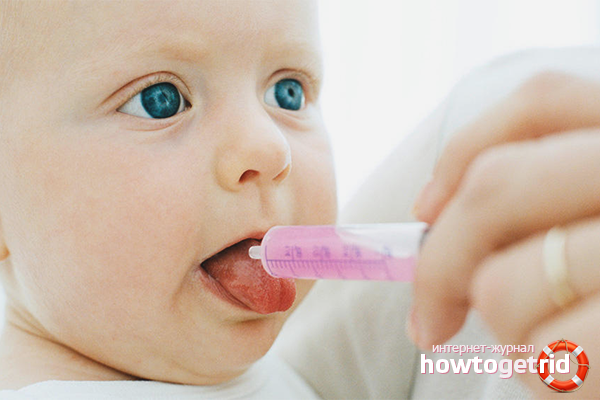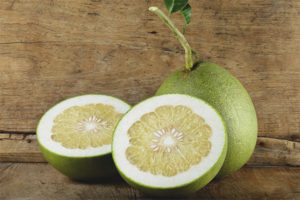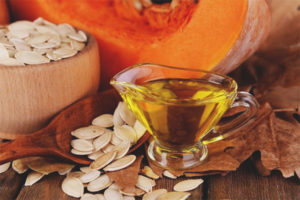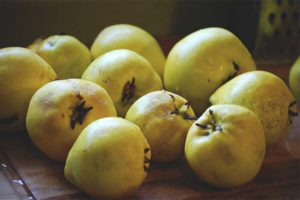The content of the article
Any disease in the baby is perceived several times more seriously, because the baby is small and the consequences can be very different. Moreover, the child cannot tell about his feelings and expresses pain by crying. One of the most unpleasant diseases at any age is stomatitis. Stomatitis is an inflammation of the mucous membrane of the oral cavity, which is manifested by various rashes, large ulcers or white patina. Stomatitis may be different, depending on the pathogen. Stomatitis occurs in infants quite often, because a small organism does not yet have a strong immune system capable of withstanding external stimuli. Moreover, the mucous film in the mouth of the crumbs is still so thin and delicate that it reacts to almost any irritant.In this article, we will learn to distinguish between types of stomatitis, identify the disease by the symptoms of the baby, learn about the causes and methods of treatment of this disease.
Types of stomatitis and the causes of their development
To know the causes and methods of treatment of stomatitis, it is necessary to clearly define the origin of the disease, this can be done by the appearance of damage to the mucous membrane.
- Candida stomatitis. This is the most common type of stomatitis in babies of the first year of life. Candida stomatitis is caused by the bacterium Candida, simply, it is a thrush. Most often, candidiasis baby gets infected from the mother with poor hygiene or passing through the birth canal. Often Candida lives in the body in moderation, but begins to activate with a decrease in immunity, hypothermia, etc. This is considered a fungal disease. For such a stomatitis characteristic whitish bloom on the cheeks, gums, palate, tongue. As a rule, the plaque can be removed, in its place remains mucous, slightly pink from inflammation. Candidiasis can also develop after taking antibiotics.
- Aphthous stomatitis. Aphthous stomatitis is a rather large sore, with clear boundaries.Ulcers are most often formed on the gums, tongue, cheeks. The color of the ulcer is whitish. This type of stomatitis brings serious pain, often the baby cries without stopping. Aphthous stomatitis can occur in children and adults, most often it suggests a decrease in immunity and deterioration of the body's defenses. Often such stomatitis occurs against the background of other serious diseases.
- Herpetic stomatitis Herpes stomatitis is caused by the herpes virus. The baby may be infected in utero from the mother or after birth when in contact with sick adults (kiss, nipple licking, etc.). For the treatment of the disease necessarily use antiviral drugs. After infection, it is no longer possible to completely get rid of the virus; it is simply suppressed by treatment and can be activated again when the body’s defenses are weakened. Herpetic stomatitis can be easily identified by small and numerous sores that look like bubbles.
- Allergic stomatitis. This type of stomatitis develops due to an allergic reaction of the body to certain foods and materials. The baby can react to a poor-quality toy, which it often takes in the mouth, to a new nipple or even complementary foods.
The sores in the child’s mouth can be due to non-observance of oral hygiene, if the baby pulls everything in the mouth, the nipples, bottles, and mother’s breasts are not of sufficient quality. Stomatitis may occur on the background of a new feeding in which there is too much sugar. The disease can develop on the background of injuries of the oral mucosa. If the doctor doubts the origin of stomatitis, he may prescribe a laboratory test, during which a smear or scraping of the baby’s sore is taken. Identification of the pathogen will help prescribe a more targeted and effective treatment. But how can a young mother suspect stomatitis?
How to recognize stomatitis
Of course, the appearance of wounds in the oral mucosa can be considered the main symptom of the disease. But what makes an inexperienced mother look into the baby's mouth? What precedes the appearance of ulcers?
- Your baby's mood changes. He does not laugh, often cries, becomes moody and irritable, does not sleep well, it is difficult to calm him down. Such symptoms speak of many diseases, but they are already a bell - there is something wrong with the baby.
- In a child with stomatitis, the temperature may rise, and it is quite high.It can occur even before the appearance of sores in the mouth.
- The gums themselves become inflamed, red, swollen. When you touch the baby cries, it speaks of tissue soreness. On the mucous membrane may appear small bubbles, which subsequently burst and ulcers form in their place.
- If you try to remove plaque with your finger or a clean fleece, in its place remains an inflamed part of the mucous membrane that can bleed.
- Salivation becomes unusually active - the body tries to wash off the inflammation itself.
- The baby refuses to suckle, as the baby experiences increased pain while eating.
- The kid often pulls pens in his mouth.
- Sometimes a child may have an unpleasant smell from the mouth.
Already closer to a year, a crumb can show a finger where it hurts. But until that time, self-diagnosis is quite difficult. Be sure to show the child to the doctor, an experienced doctor will be able to recognize the disease.
Drug treatment of stomatitis
Depending on the type of stomatitis, the treatment may be completely different. Here are some medication directions that are commonly used in the fight against stomatitis.
- Antiviral agents. If the disease is caused by the herpes virus, then antiviral drugs and ointments are necessary to treat stomatitis. Among them is Acyclovir, which is available in the form of tablets and ointment. He just sent to fight herpes. In addition to it, you can highlight Tebrofen and Oxolinic ointment, which you probably have in your house.
- Antifungal drugs. Antifungal drugs are used in the fight against candidal stomatitis. Among the most effective can be identified Nystatin, Levorin and Futsis. Be sure to pay attention to the fact that these should be children's forms of medications that can be taken at your age.
- Antihistamines. In allergic stomatitis, antihistamines are used - Zodak, Diazolin, Suprastin. They help reduce the body's response to the pathogen, relieve swelling, itching and redness.
- Painkillers It is imperative to use painkillers that will help the baby survive the disease, eat and sleep normally. After using anesthetic gels, your mouth may become numb, which will affect the quality of sucking. However, after a while the feeling passes.Among the acceptable ointments and gels include Kamistad, spray Propolis, Kalgel. Pay attention to any painkillers, they should be valid at your age. Indeed, many means the child simply swallows - they must be safe when taken orally.
- Healing In case of prolonged stomatitis or too large ulcers, the doctor may prescribe healing ointments, for example, Solcoseryl.
- Antipyretic drugs. If stomatitis proceeds with a temperature increase of more than 38 degrees, it is necessary to resort to antipyretic drugs. Among them are Ibuklin, Ibufen, Paracetamol (for children), Nurofen, etc.
Antibiotics in the treatment of stomatitis are usually not used, only in the most difficult cases when the disease is caused by a malfunction of the internal organs. If stomatitis does not go away with treatment with local antiseptics, antibacterial ointments are prescribed. The dosage and the specific drug can be prescribed only by a doctor. In no case do not self-medicate.
How to treat stomatitis in infants
In addition to medical prescriptions, there are quite a few important recommendations that will help you speed up recovery and get rid of stomatitis in a matter of days.
- Observe oral hygiene - thoroughly wash and handle bottles, nipples, toys. During the period of illness, wash the breasts after each feeding. This will protect the baby from re-infection.
- Since stomatitis is often viral, you need to ensure that your child has plenty of drink. Give the baby a chest without restrictions, offer water, at least for the period of the disease. The faster the virus is washed out of the body, the sooner the baby will recover. If the baby already receives supplements, there should be warm broth, apple juice (diluted with water), and jelly in its diet. These are simple drinks that do not cause mucous irritation.
- Moisten the room - wash the floor, open the windows. The room should be clean and cool air without dust.
- If the baby is already eating complementary foods, pay attention to the food. Food should be optimal temperature (not hot and not cold), so as not to irritate the mucous membrane of the crumbs. Give up time for mashed potatoes - it irritates the mucous. Do not add a lot of salt to the food - it will bring pain. If the baby does not want to eat - do not force it. The main thing that he drank a lot.
- Every 3 hours and after each meal, the baby’s oral cavity must be treated with antiseptics — Furacilin or Chlorhexidine. You can use simple baking soda.Dissolve a teaspoon of soda in a glass of warm water. Wash your hands thoroughly and wind a piece of sterile bandage on your finger, moisten it in the prepared solution. Open your baby's mouth and gently run a finger along the cheeks on the inside, gums, tongue. No need to do the treatment immediately after eating - the baby can tear out. You can dip the nipple in an antiseptic and give crumbs, the medicine must be spread throughout the mouth.
- Infants are often given hard rubber toys, a crust of bread, and other items to scratch their gums. Discard this idea at the time of illness. Hard materials can cause pain in the inflamed areas of the oral cavity.
- If your baby already has a few teeth, they must be cleaned using a small silicone brush with soft bristles. She puts on her mother's finger and removes food debris and plaque from her teeth. If this is not done, the disease will last much longer.
- Keep baby hygiene. Since the pussy pulls everything in the mouth, the surrounding objects must be clean — bedding, clothes, toys, mother’s hands, etc. In no case do not allow pets to clothing and personal hygiene of the child. Especially those who walk on the street.
- It is quite difficult to prevent herpes stomatitis in a child, since almost all are carriers of this virus. However, in order for the body of the crumb to resist the disease, it is necessary to strengthen its immunity. From an early age, provide the child with proper nutrition, often walk with him in the open air, massage the child and exercise therapy, temper, leaving the baby undressed for a few seconds.
- You can treat stomatitis and folk remedies. Blueberry has a good antibacterial effect - you can lubricate the mouth of a child with its juice. You can treat sores with a strong decoction of the string and calendula. They suppress inflammation, disinfect the wound, relieve pain, swelling and redness.
Pay attention to the symptoms in which you need as soon as possible to get to the doctor. If the child’s condition does not improve after three days of treatment, if the baby has become lethargic and apathetic, or vice versa, she cries all the time and cannot sleep, if it becomes harder to bring the body temperature down, you should go to the pediatrician for a second appointment.
At first glance, stomatitis may seem insignificant, and we suck is not a dangerous disease.Yes, they do not die of stomatitis, but it brings so much inconvenience, pain and discomfort that any mother would be ready to take the disease upon herself if only to relieve her child from the torment. But do not despair. With proper treatment, stomatitis is quickly treated - in 2-3 days the baby will feel relieved and will be able to eat, drink and sleep normally again, to the joy of restless parents!
Video: how to treat stomatitis in a child











To send